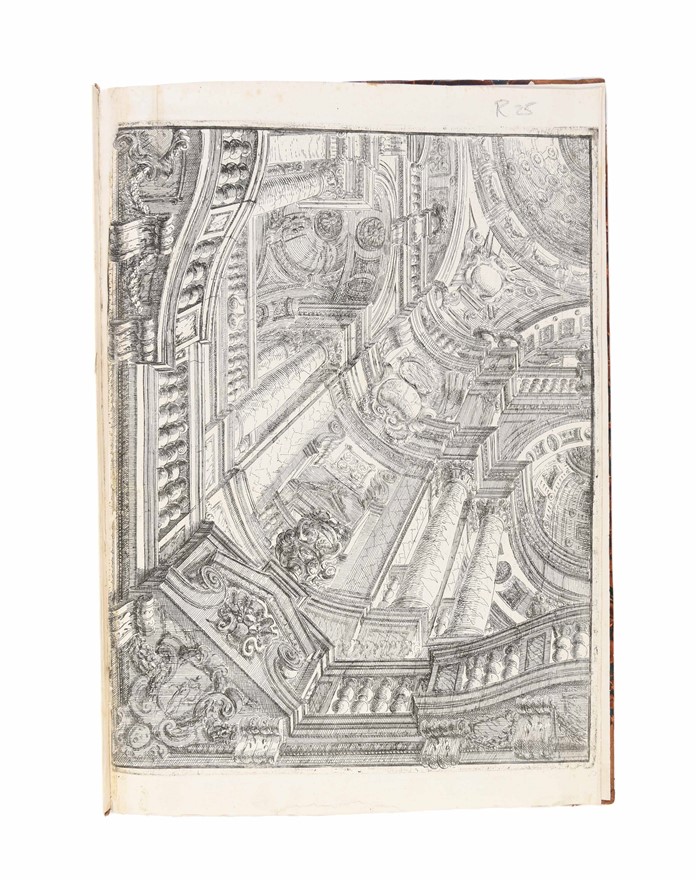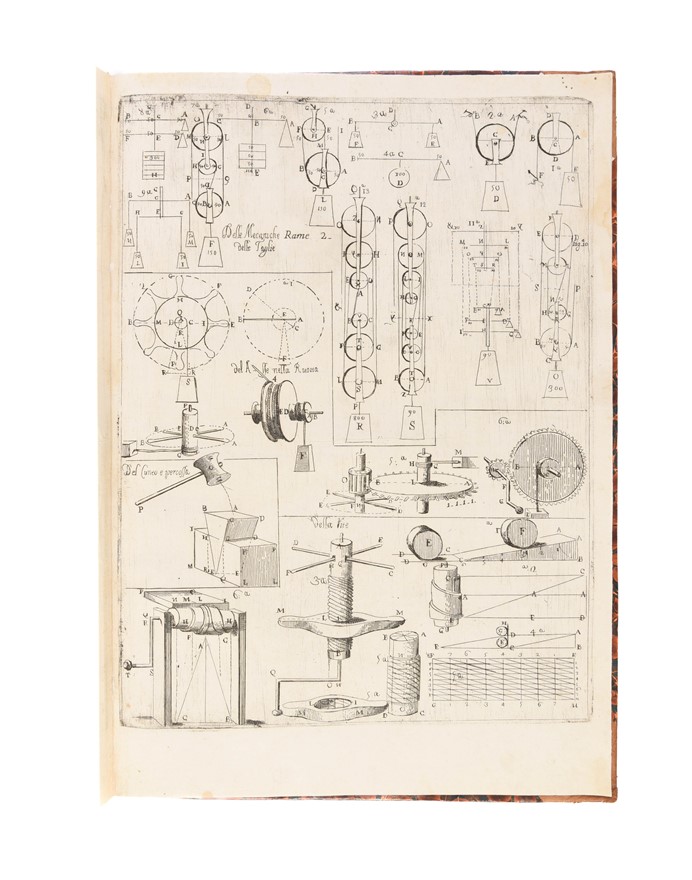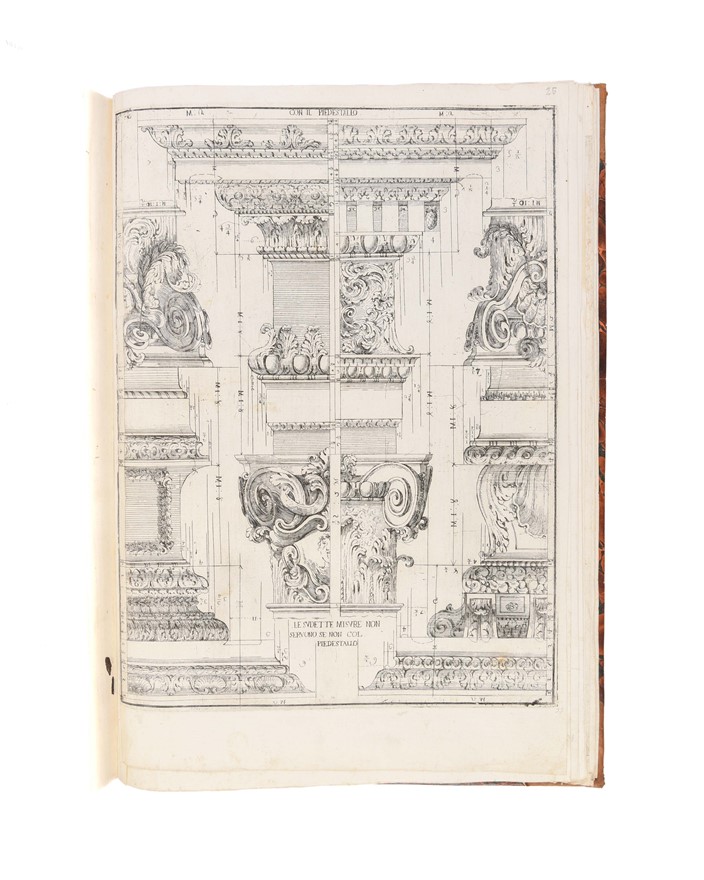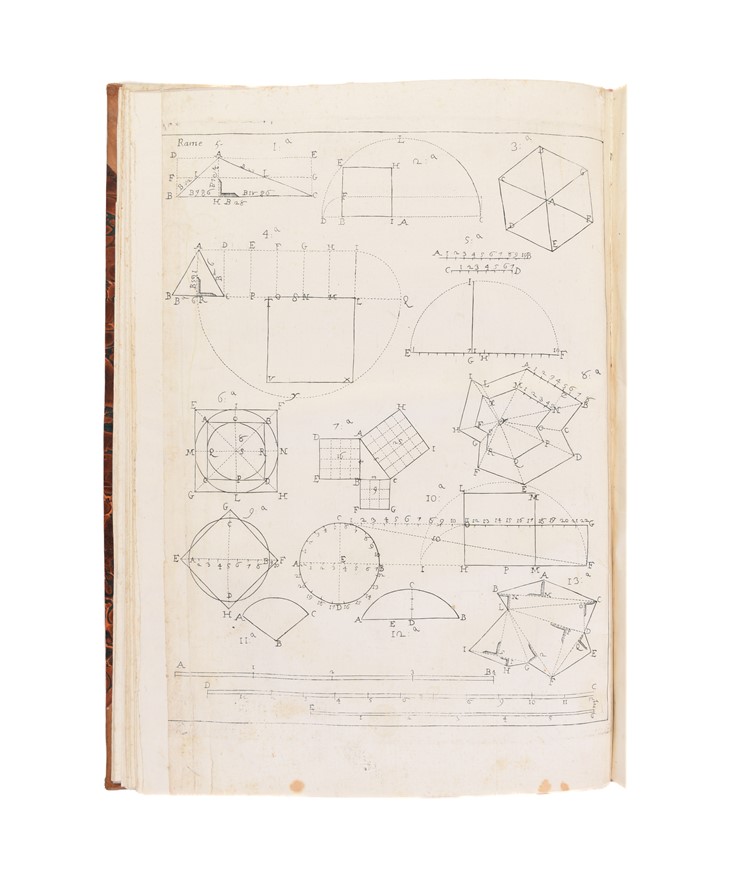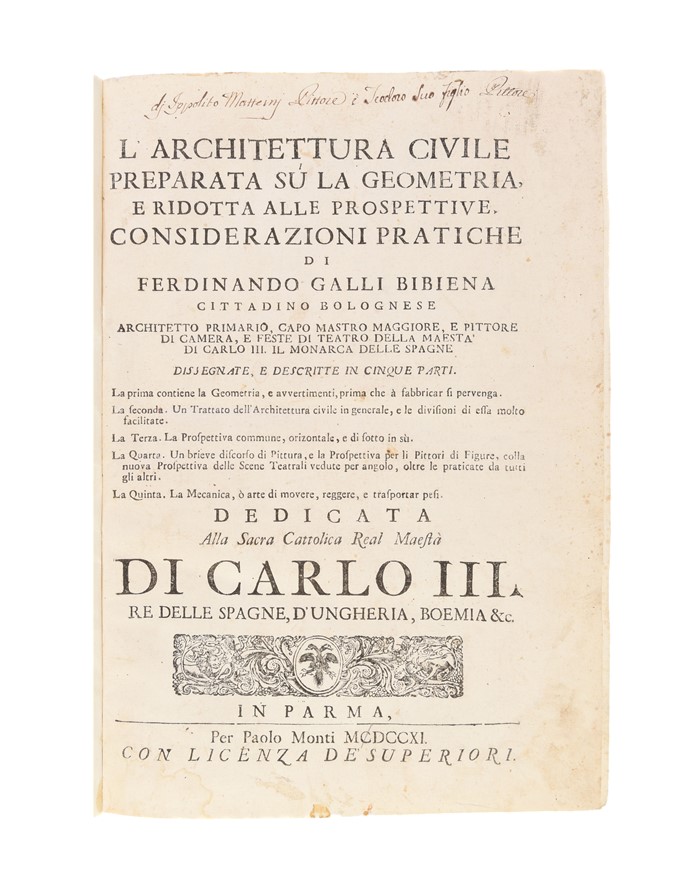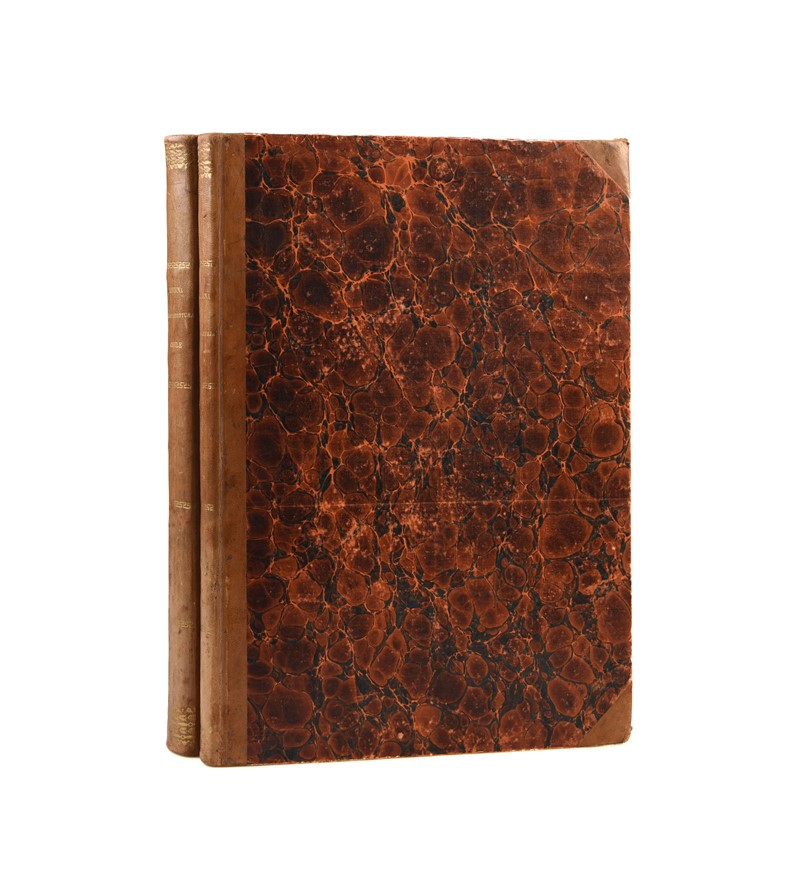L'Architettura Civile, preparata su la geometria, e ridotta alle prospettive. Considerazioni pratiche . . . disegnate, e descritte in cinque parti.
GALLI DA BIBIENA Ferdinando (1711.)
£4000.00
Please contact us in advance if you would like to view this book at our Curzon Street shop.
FIRST EDITION, OWNED BY FATHER-AND-SON PAINTERS
Engraved portrait of the author, 72 etched plates, unsigned, depicting perspective problems in civil architecture, theatrical scenes, pulleys for lifting and moving objects in the theatre, geometrical figures, columns and other building sections. A few historiated woodcut head- and tailpieces.
2 volumes. Folio (402 x 270mm.) ff. [11 (with errata page bound after portrait and before table of contents)], 156pp. Engraved portrait (printed on verso of p. xii), plates 6 (1-6) and 39 (unnumbered), 24 (1-24) [1 unnumbered], 2 (1-2), in all 72 plates. 19th-century Italian binding of half calf over marbled boards, spine gilt (binding slightly bumped).
Parma, per Paolo Monti,
The first edition of Ferdinando Galli da Bibiena's (1657-1743) work on geometry, perspective and civic architecture, a work of great importance in the history of theatre, and a splendid piece of Parma book production; with the ownership inscription of painters Ippolito Matteini (1720-96) and his more famous son Teodoro (1754-1831) in two - presumably their respective - hands.
Fowler outlines several variant issues of the first edition; the present copy aligns with 'probably the original issue' (Fowler 134) in the Spencer Collection at the NYPL, in sharing the Monti imprint, though unlike the NYPL copy in which all plates are unnumbered, several in this copy are numbered. Though the plates are unsigned, it is assumed that they were etched by Galli da Bibiena himself.
The son of painter Giovanni Maria Galli (1625-1665), Galli da Bibiena was born in Bologna and was the first of an important family of artists. Based predominantly in Parma, his commissions, which encompassed stage design, theatre construction, and wedding decoration planning for future Holy Roman Emperor, Charles VI, took him all over Italy, as well as further afield to Vienna, and Barcelona. Indeed, he returned to Parma after a sojourn in Barcelona in 1711, perhaps for the publication of the present work.
This treatise on architecture can be seen as a worthy successor to the efforts of Giulio Troili, called Paradosso, Da Bibiena's teacher, and Andrea Pozzo in theatrical design. Da Bibiena's most innovative contribution is the scena per angolo, proudly pointed out immediately in the introduction (folio *1), a displacement of centrally-oriented perspective in stage design, opening the way for more illusionist architecture (his father was an illusionist painter in Bologna). The work is practical and didactic in its intentions. The first three parts deal with geometry, civil architecture and its building components, and architectural perspective. The fourth part contains a treatise on paintings, which includes the new perspective for theatre scenes seen at an angle (pp. 129-140) and discusses briefly the merit of painters from Leonardo to Maratta. The last part deals with the more practical problems of theatre mechanics.
Provenance: 1. Inscription on title-page of 'Ippolito Matteini pittore e Teodoro suo figlio pittore' in two hands; painter and art instructor Ippolito Matteini (1720-96) and his son Teodoro Matteini (1754-1831), both born in Pistoia; Teodoro, himself a Neoclassical painter, was a pupil of Batoni and from 1807 was professor at the Venice Accademia (Thieme-Becker xxiv, 252). 2. From the library of architect Derek Gibson (1936-2021) with his name pencilled characteristically on front free endpaper.
Provenance: From the library of Derek Gibson (1936-2021).
Tear, neatly repaired, to final leaf, plates occasionally extended in the outer margin, some browning but overall an excellent copy in good condition.
Cicognara 430; Fowler, 134. Berlin Kat. 2628.
Stock Code: 246904
